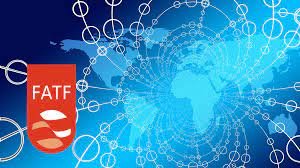Financial literacy refers to the ability of individuals to understand, evaluate, and make effective decisions about personal and universal financial matters. In today’s world, financial literacy has become an essential part of everyone’s life. Financial topics such as income management, saving, debt management, investments, and retirement planning not only affect individuals’ financial well-being but also shape the economic growth and stability of societies. Therefore, financial literacy holds great importance for both individuals and communities.
With the developments and changes in the financial world, new advancements in financial techniques, tools, and applications have further emphasized the significance of financial literacy. The need for financial security in people’s lives, both personal and professional, has propelled the development of financial literacy. Financial literacy enlightens individuals on how to properly utilize financial tools and which instruments and services align with their goals and interests. By acquiring knowledge in this field, individuals are empowered to make informed decisions. Enhancing financial literacy involves raising awareness, providing education, and developing individuals’ capacity to predict and manage financial risks effectively. When individuals make investment decisions, they are influenced by various factors. Apart from the size and quality of an investment, one of the most critical factors is the psychology of the investor and the resulting behavior.
Financial literacy strengthens individuals’ abilities to manage their financial situations by enhancing their skills in income management, increasing savings, reducing debts, and budgeting. This, in turn, boosts their financial security and well-being. Moreover, financial literacy equips individuals with analytical thinking, risk assessment, opportunity recognition, and future planning skills, enabling them to make more conscious and accurate financial decisions. Additionally, financial literacy guides individuals in managing their debts. It raises awareness on credit card usage, debt payments, interest rates, and strategies for reducing debts, ultimately helping individuals establish a solid financial foundation. Furthermore, financial literacy fosters an understanding of the investment world and enables individuals to make informed decisions about investing. Individuals gain knowledge about different investment instruments and develop the ability to understand risks, allowing them to invest more effectively in achieving their future financial goals.
One crucial aspect is that financial literacy makes individuals more resilient against financial fraud and scams. Financially literate individuals are more aware of recognizing signs of fraud, conducting secure online transactions, and protecting their personal information.
The focus on young people in financial literacy policies is driven by important reasons. Firstly, young people are more open and flexible to learning financial literacy skills as they are still forming their financial habits. Early financial education establishes a solid foundation for a sound financial future. Secondly, the financial literacy gaps among young people, if left unaddressed, can lead to more severe financial problems in later life. Providing education on borrowing, credit card usage, and budget management at an early stage helps young individuals fulfill their financial responsibilities and avoid financial crises.
Financial literacy is a significant skill that enhances the financial well-being of individuals and societies. Policies targeting financial literacy among young people play a critical role in developing the financial awareness of future generations and building a sustainable financial future. These policies should include various components such as educational programs, financial resources, and expert support. This way, young individuals can become more knowledgeable and successful in their financial decision-making, achieve their future financial goals, and contribute to the economic growth of societies.
International organizations such as the World Bank and the OECD emphasize through their research that financial literacy should become a government policy. In this context, financial literacy should be considered a crucial part of our education system. Measures should be taken to introduce financial literacy education to students not only at the university or secondary level but also starting from elementary school. The OECD frequently highlights the need for financial education to be given at a young age, as it should become a policy of states to make financial literacy a mandatory part of education at every stage, from primary education to higher levels. Furthermore, financial literacy should not only be limited to students but also extended to citizens to raise their awareness and knowledge levels. By looking at two examples—one from Europe and the other from the Americas—we can examine the efforts made in this regard.
Efforts in Enhancing Financial Literacy in the Netherlands
In the Netherlands, financial literacy education has been integrated into the curriculum at the primary and secondary school levels. Students are taught fundamental financial topics and skills such as saving, budgeting, debt management, and investments. Financial literacy education goes beyond theoretical knowledge and includes practical applications and interactive learning materials.
Campaigns and awareness programs targeting young people are organized in the Netherlands to increase financial literacy. These campaigns provide information and resources to help young individuals understand financial terms and concepts and encourage budgeting and saving habits.
Financial literacy associations and organizations in the Netherlands engage in projects specifically aimed at enhancing financial literacy among young people. These organizations collaborate with schools to develop financial literacy programs and provide resources to students. Additionally, they organize interactive activities, workshops, and seminars to raise awareness among young people and improve their financial literacy.
Mobile applications and other technological tools are utilized in the Netherlands to reach young people and enhance financial literacy. These tools provide interactive learning experiences, enable budgeting, saving, and investment tracking, and offer practical applications to improve financial literacy skills.
Collaborative projects are undertaken among financial service providers, banks, associations, universities, and other stakeholders in the Netherlands. These projects aim to promote resource sharing, expert support, and the sharing of best practices in financial literacy. Joint campaigns and activities are organized to increase awareness among young people about financial literacy.
The Netherlands has been considered a successful country in terms of financial literacy. Its policies and programs targeting financial literacy among young people take significant steps towards raising financial awareness and improving the financial skills of young individuals. Ongoing efforts and policy developments in the Netherlands support financial literacy. However, it is important to remember that each country faces different challenges and needs. While some of the successful aspects in the Netherlands may serve as inspiration for other countries, it is essential for each country to develop its own strategies according to its specific conditions.
Activities in the United States (US)
The United States implements various policies and programs to enhance financial literacy among young people. For instance, organizations such as the US Department of the Treasury and the Department of Education establish national strategies to promote financial literacy. These strategies provide guidance on financial literacy education, resources, and policies. Moreover, many states in the US include financial literacy education in their school curricula. The aim is to teach financial skills to students at the elementary, middle, and high school levels. The focus is on budgeting, saving, debt management, investments, and retirement planning.
Campaigns and collaborations are organized in the US to increase financial literacy awareness and provide resources to young people. These initiatives involve various stakeholders, including private companies, nonprofit organizations, and financial institutions, who contribute to these campaigns. Pre-college financial literacy programs and activities are organized to raise the financial awareness of young individuals through educational activities, workshops, and competitions.
Mobile applications and other technological tools are also used in the US to enhance financial literacy among young people. These tools offer interactive learning experiences, practical applications for budgeting, saving, and investment, and help young individuals develop financial literacy skills. Furthermore, financial literacy associations and organizations in the US carry out projects targeting young people. These organizations provide resources, develop programs, and run campaigns to increase financial awareness among young individuals.
Conclusion
Financial literacy may vary among countries based on their levels of development, and within a country, it can vary among different age groups, genders, education levels, and income levels. Disadvantaged groups such as young people, individuals with relatively low education levels, and those with low incomes are particularly highlighted as being at a disadvantage in terms of financial literacy. Financial literacy directly impacts individuals’ current financial situations and also has long-term implications for their retirement. Making conscious choices about borrowing and investment is essential for successful personal financial management. Financial literacy should be viewed as a long-term personal investment.
While the success of financial literacy in the Netherlands is noteworthy, it is important to remember that each country has its own challenges and needs. The efforts made in the Netherlands can serve as inspiration for other countries, but it is crucial for each country to develop strategies that align with its specific circumstances.
International organizations such as the World Bank and the OECD highlight the importance of financial literacy becoming a government policy. Financial literacy education should be seen as an integral part of the education system. In this regard, early financial education, starting from elementary school and continuing through all educational levels, should be a mandatory part of the curriculum. Moreover, financial literacy awareness should not only be limited to students but also extended to citizens, raising their level of knowledge. The development of financial literacy policies and programs is supported by continued efforts and policy developments in countries such as the Netherlands and the United States.




